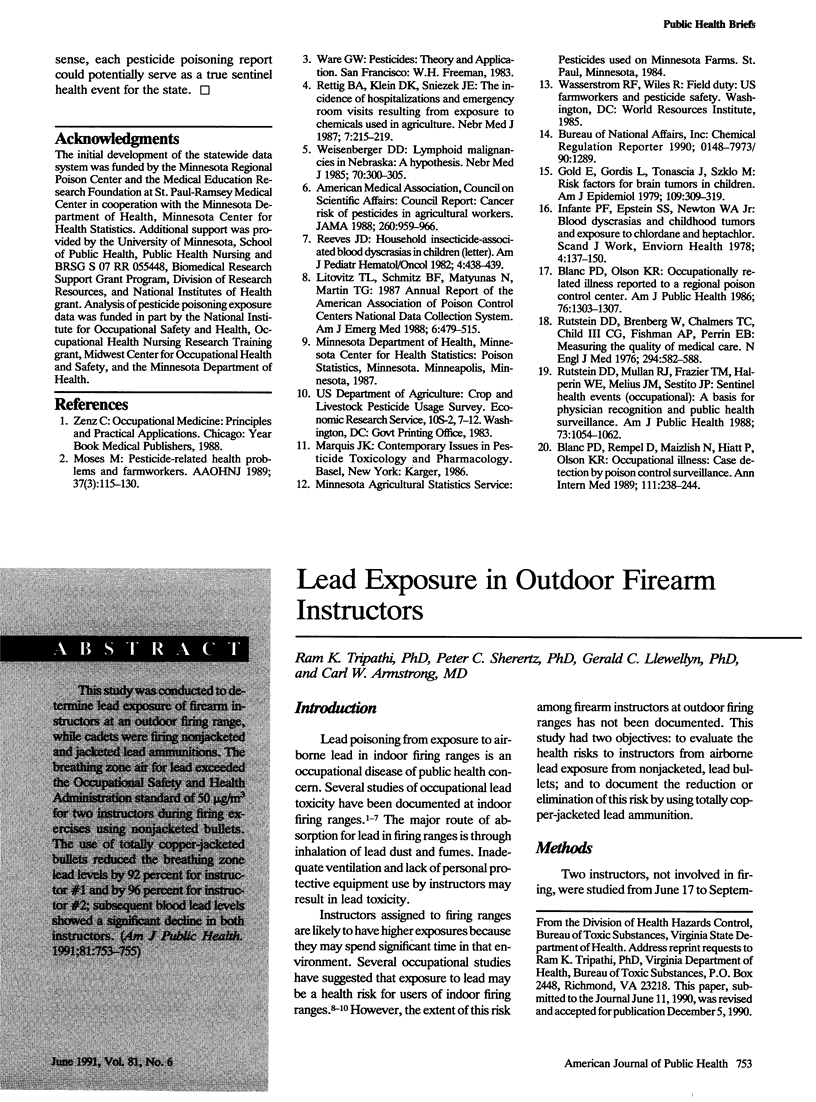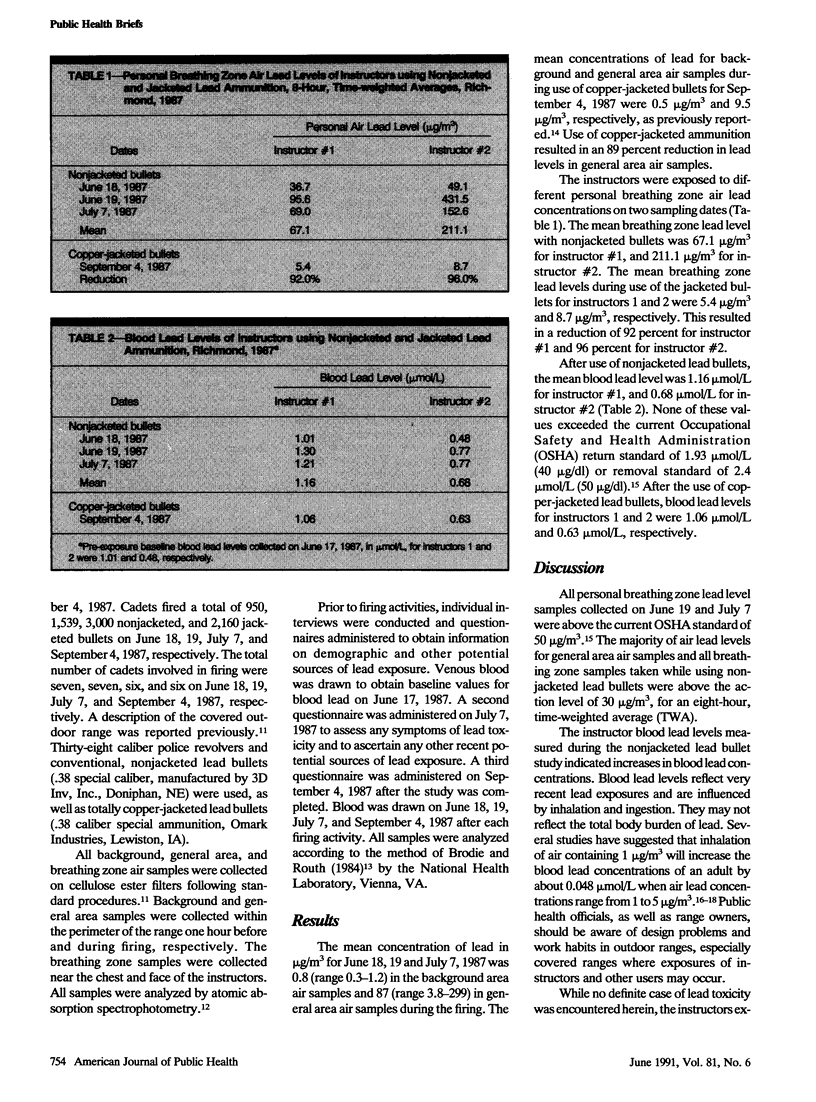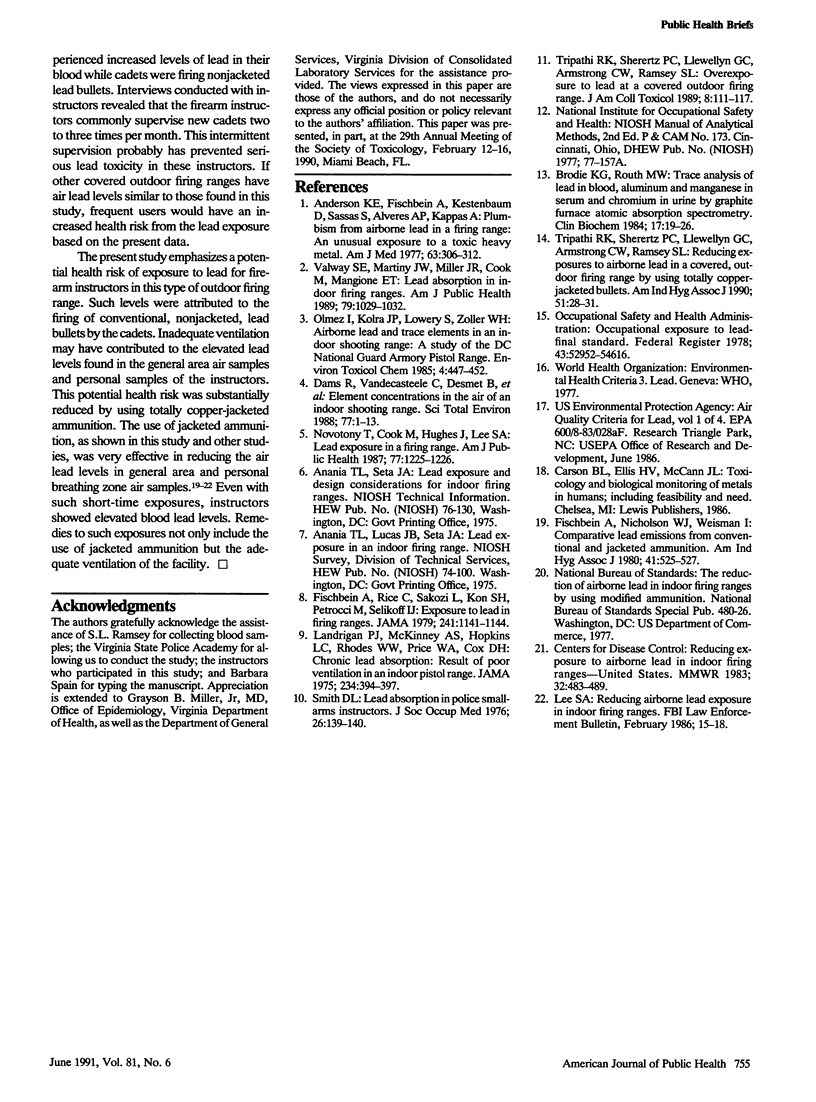Abstract
This study was conducted to determine lead exposure of firearm instructors at an outdoor firing range, while cadets were firing nonjacketed and jacketed lead ammunitions. The breathing zone air for lead exceeded the Occupational Safety and Health Administration standard of 50 micrograms/m3 for two instructors during firing exercises using nonjacketed bullets. The use of totally copper-jacketed bullets reduced the breathing zone lead levels by 92 percent for instructor #1 and by 96 percent for instructor #2; subsequent blood lead levels showed a significant decline in both instructors.
Full text
PDF


Selected References
These references are in PubMed. This may not be the complete list of references from this article.
- Anderson K. E., Fischbein A., Kestenbaum D., Sassa S., Alvares A. P., Kappas A. Plumbism from airborne lead in a firing range. An unusual exposure to a toxic heavy metal. Am J Med. 1977 Aug;63(2):306–312. doi: 10.1016/0002-9343(77)90246-7. [DOI] [PubMed] [Google Scholar]
- Brodie K. G., Routh M. W. Trace analysis of lead in blood, aluminium and manganese in serum and chromium in urine by graphite furnace atomic absorption spectrometry. Clin Biochem. 1984 Feb;17(1):19–26. doi: 10.1016/s0009-9120(84)90390-4. [DOI] [PubMed] [Google Scholar]
- Dams R., Vandecasteele C., Desmet B., Helsen M., Nagels M., Vermeir G., Yu Z. Q. Element concentrations in the air of an indoor shooting range. Sci Total Environ. 1988 Nov 1;77(1):1–13. doi: 10.1016/0048-9697(88)90309-9. [DOI] [PubMed] [Google Scholar]
- Fischbein A., Nicholson W. J., Weisman I. Comparative lead emissions from conventional and jacketed ammunition. Am Ind Hyg Assoc J. 1980 Jul;41(7):525–527. doi: 10.1080/15298668091425185. [DOI] [PubMed] [Google Scholar]
- Fischbein A., Rice C., Sarkozi L., Kon S. H., Petrocci M., Selikoff I. J. Exposure to lead in firing ranges. JAMA. 1979 Mar 16;241(11):1141–1144. [PubMed] [Google Scholar]
- Landrigan P. J., McKinney A. S., Hopkins L. C., Rhodes W. W., Jr, Price W. A., Cox D. H. Chronic lead absorption. Result of poor ventilation in an indoor pistol range. JAMA. 1975 Oct 27;234(4):394–397. doi: 10.1001/jama.234.4.394. [DOI] [PubMed] [Google Scholar]
- Novotny T., Cook M., Hughes J., Lee S. A. Lead exposure in a firing range. Am J Public Health. 1987 Sep;77(9):1225–1226. doi: 10.2105/ajph.77.9.1225. [DOI] [PMC free article] [PubMed] [Google Scholar]
- Smith D. L. Lead absorption in police small-arms instructors. J Soc Occup Med. 1976 Oct;26(4):139–140. doi: 10.1093/occmed/26.4.139. [DOI] [PubMed] [Google Scholar]
- Tripathi R. K., Sherertz P. C., Llewellyn G. C., Armstrong C. W., Ramsey S. L. Reducing exposures to airborne lead in a covered, outdoor firing range by using totally copper-jacketed bullets. Am Ind Hyg Assoc J. 1990 Jan;51(1):28–31. doi: 10.1080/15298669091369286. [DOI] [PubMed] [Google Scholar]
- Valway S. E., Martyny J. W., Miller J. R., Cook M., Mangione E. J. Lead absorption in indoor firing range users. Am J Public Health. 1989 Aug;79(8):1029–1032. doi: 10.2105/ajph.79.8.1029. [DOI] [PMC free article] [PubMed] [Google Scholar]


